Britain’s train manufacturers face even leaner times ahead unless the government introduces a clear strategy for new rolling stock… and then follows through with a programme of orders, says Philip Haigh.
In this article:
Britain’s train manufacturers face even leaner times ahead unless the government introduces a clear strategy for new rolling stock… and then follows through with a programme of orders, says Philip Haigh.
In this article:
- Historic Impact of Train Manufacturing: Britain has a rich history in rolling stock manufacturing, with names like Stephenson, Vulcan Foundry, and Derby shaping communities and industry.
- Modern-Day Challenges: Despite investments in new plants like Siemens' Goole and Hitachi's Newton Aycliffe, idle production lines and uncertain orders threaten the industry.
- Battery-Powered Future: Battery-electric trains offer potential for decarbonization, but infrastructure and a cohesive government strategy are essential for realization.
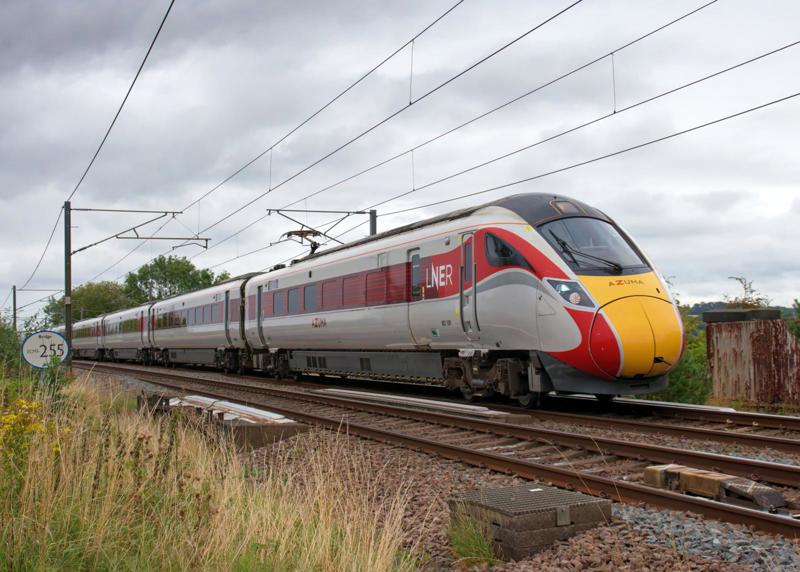
While many eyes are focusing on this year’s ‘Railway 200’ bicentenary celebrations, the equivalent milestone in rolling stock manufacturing passed in 2023 with little celebration of Robert Stephenson and Company and its Forth Street works in Newcastle upon Tyne.
The names that followed read as a roll call of British locomotive history - Vulcan Foundry, Hawthorn Leslie, Sharp Stewart, Manning Wardle, Hunslet, Beyer Peacock, Dubs, and Andrew Barclay to name just a few.
Separate companies made wagons and passenger coaches, with the latter initially coming from coachbuilders with history in the stagecoach market. Hence Joseph Wright set up works at Saltley in Birmingham - the same suburb that built Avanti West Coast’s Class 390s and which will house HS2’s rolling stock depot.
Between them all, they supplied British railway operations but also built for export. As Britain’s main line companies grew, so they took work increasingly in-house, building locomotives and stock for themselves.
They had a huge impact on their communities. Indeed, for many, the Great Western Railway works at Swindon was the community. But locomotive and carriage building made names of many places - Doncaster, Eastleigh, Wolverton, St Rollox, Horwich, Crewe, and Derby to (once again) name just a few.
They were as reliant on orders as any factory today. In the good times they did well, but many fell by the wayside in tough times. A slump in orders between the First and Second World Wars hit hard. In 1933, for example, the North British Locomotive Company built just 16 locomotives in a factory that had capacity for 600.
Yet there followed a boom after WW2, as railways rebuilt. Steam gave a last hurrah for some, but North British went bust in 1962, unable to make the transition to modern traction. Other companies survived by amalgamation.
Perhaps the best known were English Electric for locomotives and Metropolitan-Cammell for coaching stock. In addition, British Railways (later British Rail) continued to build its own rolling stock from its principal works, which it amalgamated in the 1970s into a wholly owned subsidiary - British Rail Engineering Limited.
BREL then split four works into a maintenance division - Eastleigh, Wolverton, Doncaster and Glasgow - to concentrate on repairs. It sold off Doncaster Wagon Works and Horwich, to leave BREL with Derby Litchurch Lane, Derby Locomotive, Crewe and York.
BREL was an early privatisation, becoming ABB Transportation (later Adtranz), but losing Derby Loco and York along the way.
On the private side, GEC took over the mighty English Electric in 1969 and later merged with France’s Alstom to become GEC Alsthom, adding Metropolitan-Cammell and its Saltley factory as it went. Today it’s simply Alstom, which is Britain’s sole historic train maker because in 2021 it bought Bombardier Transportation, which had earlier bought Adtranz.
Thus, Alstom brought together the threads of independent and railway company manufacturing.
Separately, there’s still a trace of the former BR maintenance companies in the shape of sites such as Wolverton, which continues repair work today as part of Gemini Rail.
So, the history of making rail vehicles in Britain comes to a single point with Alstom’s Derby Litchurch Lane.
Except it doesn’t. In recent years, Hitachi, CAF and Siemens have all built rail manufacturing plants on sites with no roots in railway history.
The biggest of these is Hitachi’s facility near Newton Aycliffe, which opened in 2015 and produced hundreds of vehicles for the Department for Transport’s Intercity Express Programme deal. It followed this with orders for similar vehicles for other operators, including Hull Trains, TransPennine Express and Avanti West Coast.
CAF followed with a plant at Newport in South Wales. This has assembled diesel multiple units for Northern and West Midlands Trains, but more recently has been busy with 180 vehicles for Transport for Wales. Its sole future work is to produce ten ten-car units for LNER (RAIL 997).
Speaking when CAF announced this order in November 2023, CAF UK Director Richard Garner said: “The new contract will help secure CAF’s future in the UK, and support the recruitment of additional employees and apprentices at both the Newport factory and in the North of England where the units will be maintained.”
A year later, CAF cited client confidentiality, as it refused to comment when RailReview asked if CAF had any further orders for Newport. At the same time, CAF claimed it was confident the plant had a future.
Siemens formally opened its plant in Goole earlier this autumn (RAIL 1020), to build stock for London’s Piccadilly Line.
At its opening event, Siemens Joint CEO Sambit Banerjee commented: “We’ll assemble 80% of London’s new Piccadilly Line trains and all future Siemens trains for the UK - including our new Verve battery train - here in Goole.”
But the company also confirmed that it has no orders lined up once the Piccadilly Line work is complete. It hopes for an order for the Bakerloo Line, where trains dating from 1972 still ply the route, looking every inch their 50 years.
Hitachi had nothing on its order books until early December, when FirstGroup announced a £500m ten-year lease deal with Angel Trains for 14 five-car trains (a mix of electric, battery electric and bi-mode) to be built at Newton Aycliffe.
The deal included an option for another 13 five-car trains if First’s open access applications for London-Rochdale and London-Paignton services wins approval from the Office of Rail and Road, and if it’s permitted to extend Lumo’s London-Edinburgh service to Glasgow and add London-Sheffield via Retford to its Hull Trains operation. This option is worth around £460m.
There were similar concerns for Alstom’s Derby plant earlier last year, until government authorised £220 million funding for Transport for London to place a follow-on order for ten nine-car Class 345 electric units for the Elizabeth line.
Alstom is now re-mobilising its production line, having delivered the last of the original order for 70 trains in 2019, before switching to other orders that kept staff busy until earlier this year.
Purists may call most of today’s plants mere assembly shops, taking in components and turning them into trains. But the days of railway works casting their own components in iron or brass, forging parts or rolling steel plates to form boilers are long gone.
Today, most passenger stock comes from aluminium extrusions welded into bodyshells which are then fitted with third-party equipment, such as seats, traction electronics and computers.
For Siemens at Goole, the Piccadilly Line order involves taking painted but doorless bodyshells made in Vienna, equipping them, and marrying them to bogies from Graz.
CAF’s assembly method has also involved taking in bodyshells, bogies and engines as major items.
Derby stands out as a place which can design trains, but also make bodyshells.
Newton Aycliffe, too, produces bodyshells following investment in welding facilities.
This comes together in the order for High Speed 2’s 54 eight-car trains. Comprising 432 vehicles, this is the biggest order placed since December 2019 (the other being CAF’s 100 vehicles for LNER).
Alstom won HS2’s £2 billion deal in partnership with Hitachi. It will see Newton Aycliffe complete initial fit-out, before the shells move to Derby for completion with interiors, electrics and bogies, which Alstom will make in Crewe.
Announcing the order in December 2021, Alstom said it would be the first time in 17 years that bogies had been made in Britain. At the same time, the DfT said the first train was expected to roll off the production line around 2027.
Alstom Business Development Director Des McKeon told RailReview that HS2’s rolling stock would occupy only one production line at Derby, and that it demanded “quite a slow build”.
He noted that Derby would in future have three production lines that needed to produce 250 cars a year. That compares with the six lines currently in Derby.
Derby will be the home of Alstom’s Adessia train, McKeon said. This is its next generation of single-deck electric multiple units for worldwide customers, including those in Britain. The company has dedicated between 100 and 150 design engineers to it, based in Derby but supported by software engineers around the world.
McKeon said Adessia would be cheaper, lighter and more energy-efficient than existing designs, and had been built around passengers rather than engineers.
For Britain, it would have low floors designed to match Network Rail’s standard platform height, although McKeon noted that this made it more expensive.
Alstom later clarified that the extra cost came from two factors. The first is the need to install a moving step to bridge any gap between train and platform. The second is that the lower floor gives less space for equipment under the train, with Alstom saying that smaller equipment is generally more expensive.
McKeon added that Alstom was bringing in with Adessia a simplified train control and management system (TCMS). This would be less complex that the TCMS fitted to Aventra EMUs, after Alstom found that less than half the functionality of the more complex system was being used.
The type would be able to run on conventional electrified networks (overhead line or third rail for Britain), but could also be a battery or hydrogen unit.
It represents Alstom bid for Southeastern’s tender for EMUs to replace its Networker fleet, which dates from the 1990s. (Southeastern has shortlisted Alstom, Stadler, Siemens, CAF and Hitachi for this likely order of 350-570 vehicles.)
McKeon reckoned the battery version could manage London to Birmingham on one charge, which puts it in the frame for the next generation of trains running Chiltern services from Marylebone. That’s about 110 miles.
It might also put it in contention for Northern’s need to replace diesel units that date from the mid-1980s and early 1990s, with new fleets of perhaps 1,000 vehicles.
This is stock such as Northern Classes 150, ‘156’ and ‘158’. They run decent distances away from overhead electric wires, such as Leeds-Carlisle (which has 86 miles beyond electrification’s limit at Skipton), Carlisle-Newcastle (61 miles), and Scarborough-Sheffield via Hull and Doncaster (113 miles).
But the units that run these services currently do many more miles in a day’s work between refuelling. Tracking Northern 158758 on November 19 shows it working 488 miles, for example.
This strongly suggests that future battery trains will need fast-charging facilities, as Great Western Railway is currently testing on its Greenford branch (RAIL 1006).
This makes batteries a matter that goes beyond trains, to include infrastructure as well. McKeon lamented the lack of a joined-up railway, saying that this was a challenge for Great British Railways.
At Angel Trains, Chief Executive Malcolm Brown made the same point to RailReview in autumn 2024 as he made to Parliament’s Transport Select Committee in December 2023.
He said then: “If you go to battery, how are we going to charge it? Where are we going to charge it? How are we going to connect to the National Grid? Just now, there is a timeframe of about seven years, I believe, for certain parts to connect.
“There is no point having a battery train if we have nowhere to charge it. I’m not going to take a three-pin plug to the depot and shove it in. I need to think of the whole actual system, but the investment is there, and it is willing.”
Angel is one of those involved with fitting batteries to a TransPennine Express Class 802 that Hitachi built. The companies claimed in November that this trial had exceeded expectations, with fuel cost savings of 35%-50% and a 70km (45-mile) run purely on battery power. From this, Hitachi reckoned such a train would have a range of 100km-150km (60-90 miles).
This leaves batteries as contenders (but not yet certainties) to replace diesel services.
Certainty plays to Alstom’s Adessia strengths and Derby’s place in Britain’s rolling stock future, while Hitachi’s claimed successes with its battery Class 802 could translate into regional (rather than inter-city) stock, if batteries prove to be applicable to trains similar to its Class 385 EMU.
Both manufacturers could then look forward to more assured order books.
But if batteries remain merely contenders, then Northern would be replacing its diesels with another generation, as it recently did with the Class 195s it received from CAF from 2019 onwards. Although CAF has supplied battery-electric multiple units to Germany’s North Rhine-Westphalia area, it has yet to demonstrate similar technology in Britain.
Likewise Siemens, which says it can supply battery-electric trains built at Goole. It suggests that only 20%-30% of a route needs to be electrified to allow its trains to be charged as they run.
Siemens also says that its Rail Charging Stations can be connected directly to 11kV grid rather than the 275/400kV distribution network, which could cut delivery times for electrification schemes from seven years to as little as 18 months.
Siemens built its last DMUs for the UK market in 2006, when it supplied Class 185s to TransPennine Express. Given the near 20-year gap, it’s unlikely to return to diesel, which means that CAF is the only company likely to supply diesel stock with UK manufacture.
There is another train maker, Stadler, that has just introduced stock featuring diesel to the UK.
Its Class 756 tri-mode units started carrying passengers for Transport for Wales on November 18. These units differ from Stadler’s battery-electric Class 755 by having a diesel engine, too. But Stadler has no UK factory and appears unlikely to build one.
Trade body the Railway Industry Association (RIA) puts its weight behind batteries as the best way to decarbonise rail travel. It said in April 2024 that there were 1,100 diesel vehicles that would be 35 years old by 2030. Replacing them with either new or converted battery-electric trains would be a “no regrets order”, it said (RAIL 1008).
RIA proposes in-fill electrification to increase coverage, with either wired sections of lines or charging points.
To take the Northern example used above, it would wire Newcastle-Hexham (a section used by three trains per hour each way), install a charging point around Kirkby Stephen on the Leeds-Carlisle line, while assuming that Hull-Doncaster receives full overhead electrification.
RIA paints a similar story for the rest of Britain. Technical Director David Clarke said at the time: “We need the industry to come up with a plan to sell it to government, rather than waiting for the government.”
RIA’s call to invest in infrastructure as well as just ordering trains plays to McKeon’s point, and to Brown’s, that track and train must be integrated and co-ordinated if Britain is to see a decisive shift towards the battery traction that train makers foresee and expect to build stock for.
That’s the challenge for government as it looks to join track and train through Great British Railways. But that’s a few years away, while UK manufacturing plants stand increasingly idle today.
Before she abruptly left office in late November, former Transport Secretary Louise Haigh said she did not want to hoard power in Whitehall. But with Whitehall making all the funding decisions for rail at the moment, it cannot escape its rolling stock role.
Britain’s ability to make trains is already shrinking - shown not least by Derby’s downsizing. But if will shrink further without a clear strategy from government, followed by some orders.
Login to continue reading
Or register with RAIL to keep up-to-date with the latest news, insight and opinion.


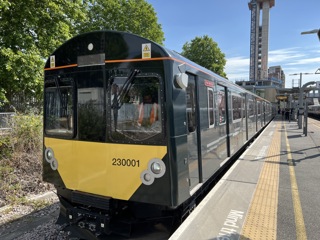
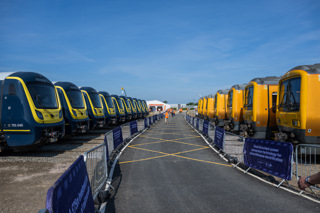
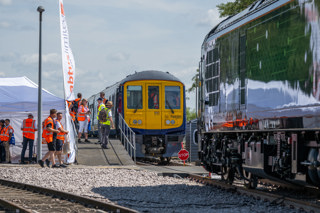
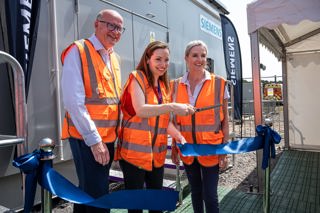
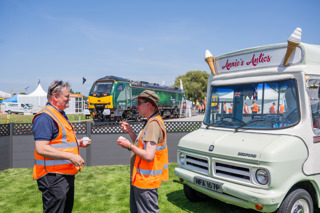











Login to comment
Comments
No comments have been made yet.